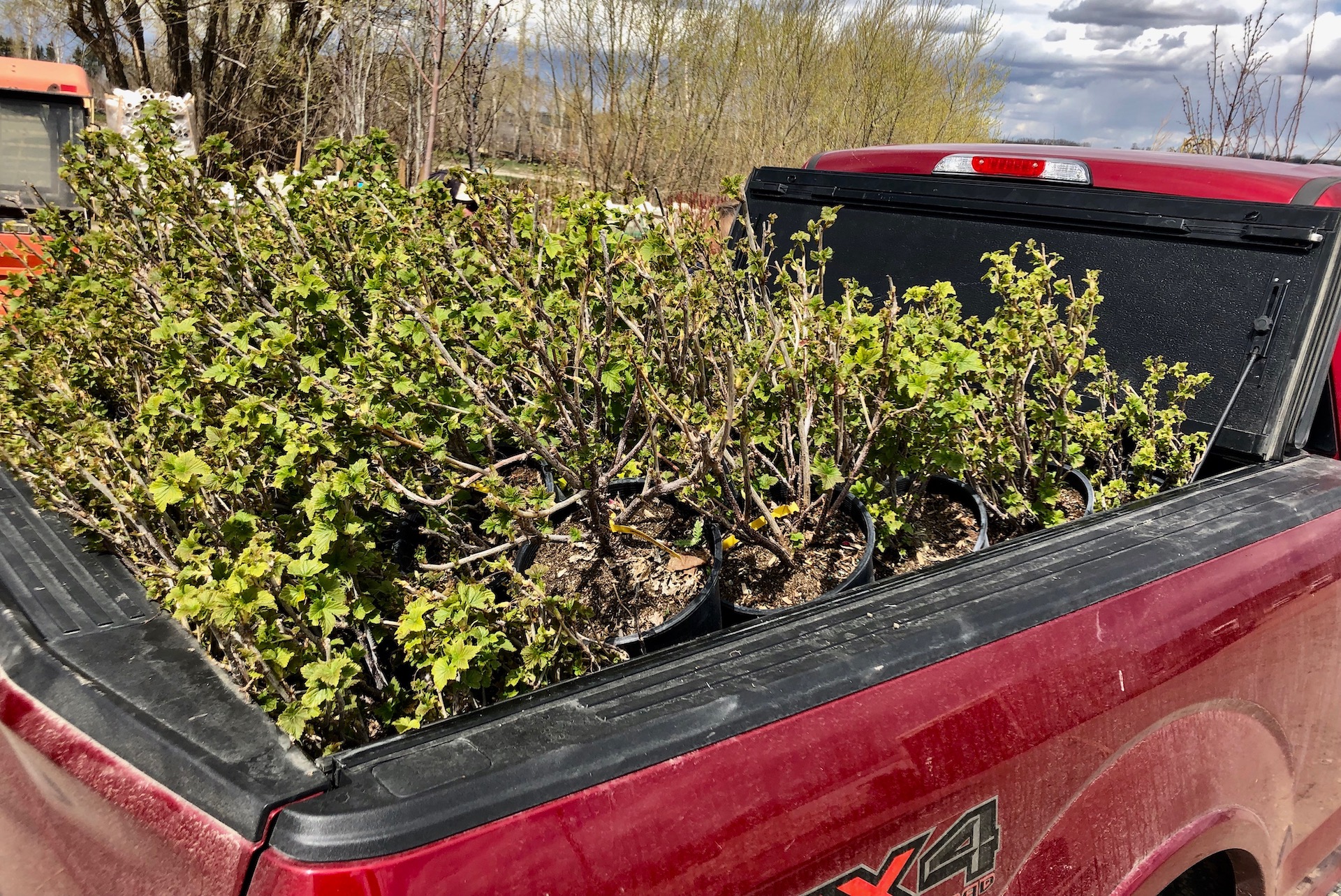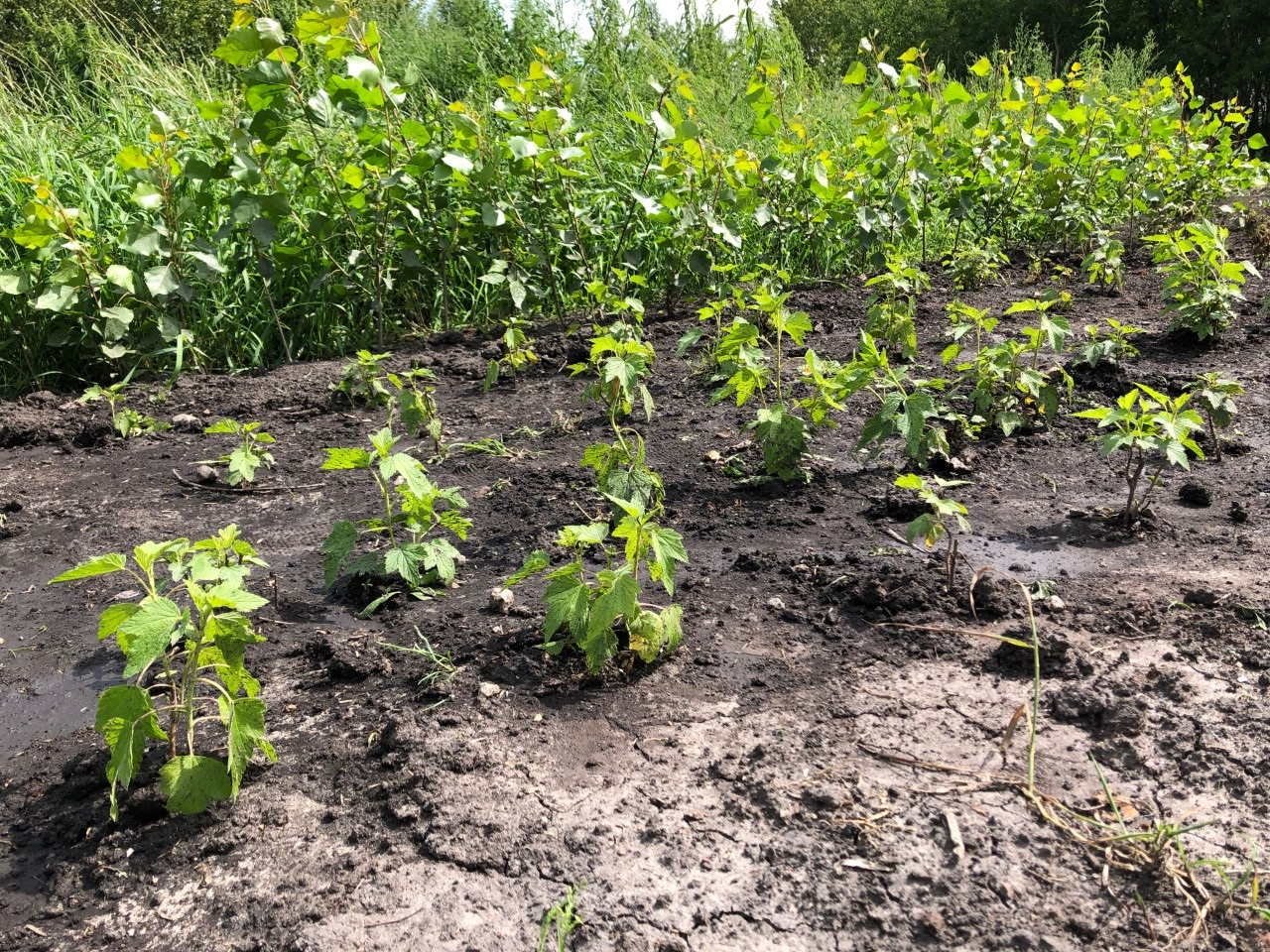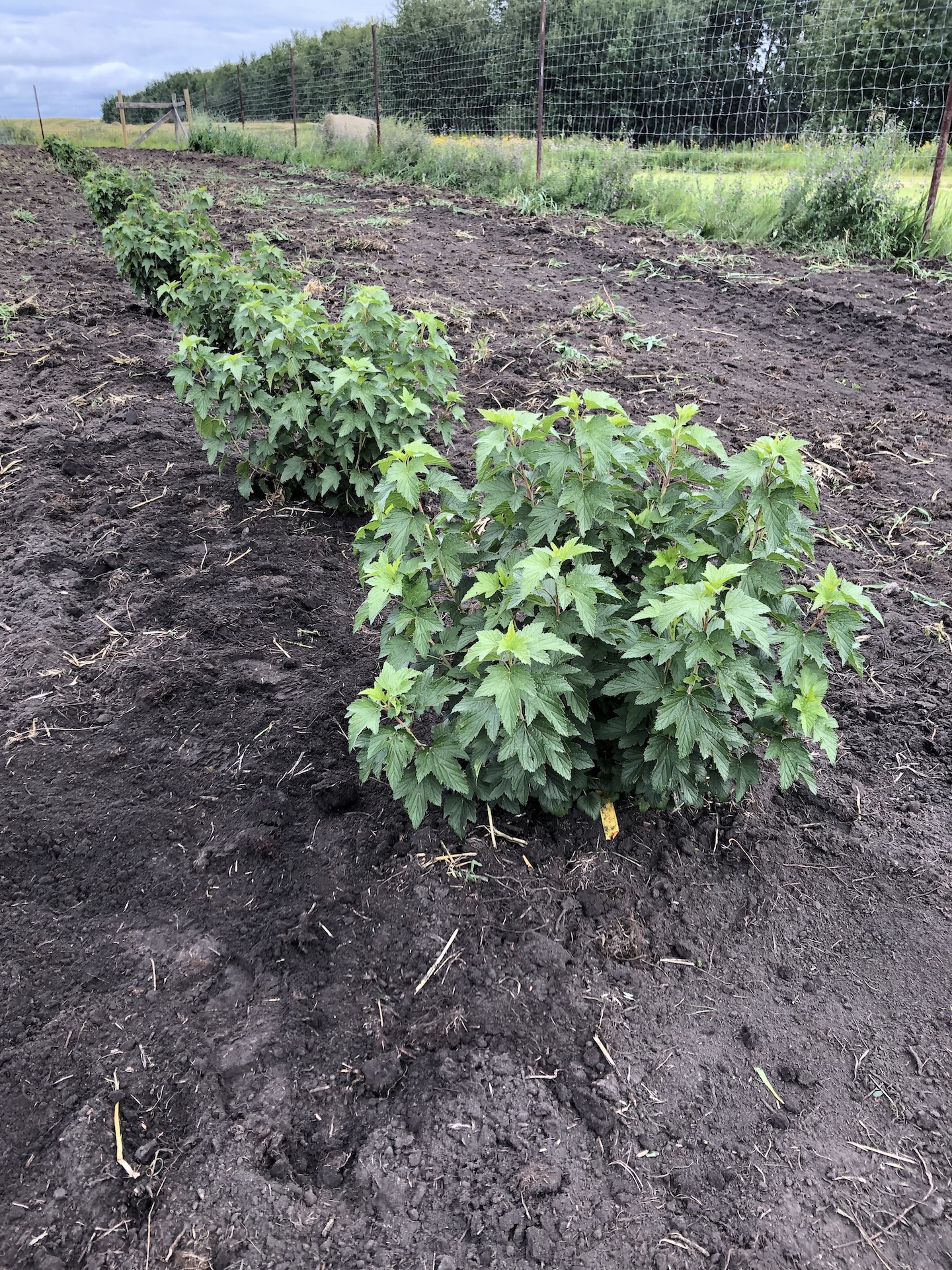Ribes nigrum
Ravensfield Farm will supply the Bee & Thistle Winery with Black Currants to expand the fruit wine flavour selections available to you. It has selected the Ben Nevis variety for its first Currant offering. Until the plants are productive enough to make a full batch, we have purchased from Popham Lane Farm in Ontario, believing their fruit to be of the quality and flavour we need to produce our 2020 vintage.
The initial planting was 100 2-year-old Ben Nevis shrubs, added to the orchard in late May, 2019. Over the next 2 years, cuttings will be taken from healthy plants and the Black Currant section of the orchard will expand to 5 rows of 88-100 plants each (470 plants) and one row of 40 plants at the end of the Saskatoon row. The goal is to have at least 500 actively producing plants. We hand harvested our first planting in 2020, and plan to harvest by hand again in 2021, with mechanical harvesting planned thereafter.
The Ben Nevis variety of Black Currants was chosen for its hardiness, fruitfulness, freedom from disease and ease of care. It grows approximately 4 feet high and 3 feet wide, filling out to ground level. Because it is a full shrub, it must be pruned.
Black Currant pruning takes place in late summer following harvest. They need to be judiciously pruned for several key reasons:
proper pruning will maximize fruit production the following year;
the growth area will be free of disease;
plants will become stronger; and
plants will be healthier overall.
Black Currant fruit is borne primarily on one-year-old shoots. Our newly-planted bushes will be pruned quite severely, cutting all shoots back to two buds above ground level. The general rule is to remove all weak shoots and those growing out sideways (this encourages an upright habit which facilitates mechanical harvesting). The remaining branches will be thinned to remove old, unproductive wood and to encourage new shoots. An established bush will not be allowed to become overcrowded and will have about one third of its main branches or stems removed each year.
We look forward to seeing how well our Black Currants do in remote Saskatchewan. All signs point to a promising growth period followed by successful harvesting.
Follow along on our Ravensfield Farm blog for progress updates on the Black Currants.






